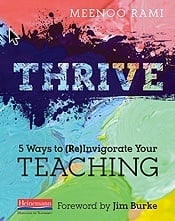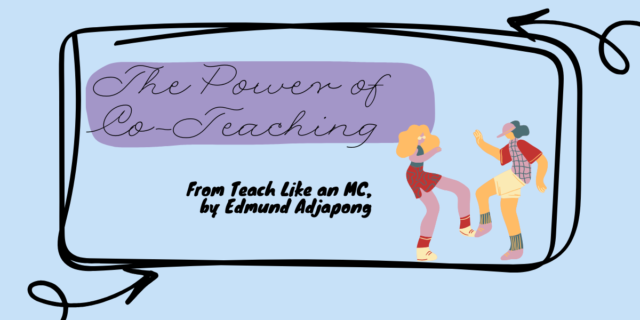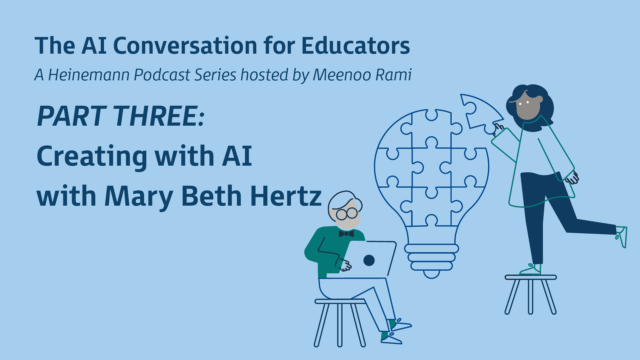Meenoo Rami once experienced anxieties familiar to many teachers: the sense of isolation, a lack of self-confidence, and fear that her work was having no positive impact. In Thrive, Meenoo shares five strategies that helped her become a confident, connected teacher and shows both new and veteran teachers how to overcome the challenges and meet the demands of our profession.
Meenoo Rami once experienced anxieties familiar to many teachers: the sense of isolation, a lack of self-confidence, and fear that her work was having no positive impact. In Thrive, Meenoo shares five strategies that helped her become a confident, connected teacher and shows both new and veteran teachers how to overcome the challenges and meet the demands of our profession.
Meenoo teaches English at the Science Leadership Academy (SLA), in Philadelphia. In today’s post, you’ll hear about the attitude of collaboration at SLA that inspired Meenoo to write Thrive. In tomorrow’s post, you’ll find some of Meenoo’s suggestions for how to thrive as a teacher.

You teach in a district that has received national attention for its budget troubles and sweeping staff cutbacks, yet you’ve written a book about how to thrive as a teacher. How do you and your colleagues find meaning and energy in your work?
Our connections with our students are the source of much of our energy: when you’re asking deep, rich, and thoughtful questions with your students, the energy in the classroom changes; it feeds the students as well as you as a teacher. For example, right now my eleventh graders are writing creative pieces after studying how Tim O’Brien, the author of The Things They Carried, shapes stories by blending truth and fiction. We’re inviting parents, teachers, professors, and graduate students to make up a judging committee that will read these pieces. Knowing that their work will be judged blindly (they will put only their ID numbers on their papers) by readers other than me is bringing new energy to the classroom. I am certainly feeding off that energy.
I also get energy from my colleagues, from our being able to rely on one another for support when we need it. My colleagues go out of their way to problem-solve with me and provide their perspective on situations I face in the classroom. When I tell people from other schools this, they sometimes think this kind of collaboration is only possible at SLA. While I agree that I work with some amazing people, there’s more potential for teacher collaboration in schools than people realize.
What concerns from teachers about their work and the profession led you to write Thrive?
The teacher turnover rate was certainly on my mind as I was writing. Teachers have an unfathomable impact on student learning. We, as a profession and as a society, need to attract the best people and find ways to support them once they enter the classroom.
In Thrive, you write, “I believe this is the best moment to be a teacher. Despite attacks on our profession, union-busting that is rampant around the country, and unrelenting focus on standardization rather than individualization in schools, there is amazing and exciting work being done in our classrooms.” What gives you hope right now?
I have hope because I see a groundswell of teachers who want to move away from the factory model of education to education for the next generation of change-agents. We teachers are incorporating technology in thoughtful ways to leverage connections among students throughout our classrooms; we are bringing new audiences to the work our students are creating; and most of all, we are asking our students to claim their education actively rather than receive it passively.
Click here for more information on Thrive.
To read a sample chapter, click here.
Connect with Meenoo:
Join the Thrive conversation on Twitter:


